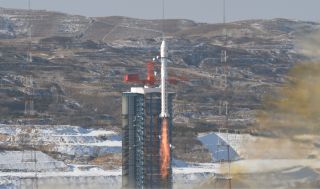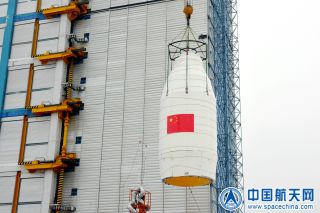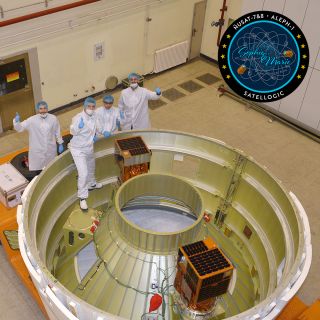China successfully sent four satellites into orbit early on Wednesday (Jan. 15) with the country’s second launch of 2020.
The Long March 2D rocket launch took place at 10:53 a.m. local time Wednesday (0253 GMT, or 9:22 p.m. EST Jan. 14) at the Taiyuan Satellite Launch Center in northern China.
Footage released by Chinese state news outlet CCTV shows the exhaust patterns created by hydrazine and nitrogen tetroxide propellant as the Long March 2D lifts off. Moments later, insulation tiles are seen falling away as the rocket climbs into the sky.
Video: Watch China’s 2nd rocket launch of 2020 blast off!
The mission is China’s second of the year so far, following the launch of a mystery payload on Jan. 7. It is the third launch globally as SpaceX kicked off the year by sending 60 Starlink satellites into orbit on Jan. 6.
The largest satellite on Wednesday’s launch was the Jilin-1 (Wideband-1) Earth observation satellite. The satellite is part of a planned constellation of imaging satellites being developed by Chang Guang Satellite Technology Co., Ltd., a commercial spinoff from the Chinese Academy of Sciences. The satellite, also known as Red Flag-1 H9, will provide super wide coverage with resolution better than 1 meter.



Also aboard were two imaging satellites for Satellogic, an Argentina-based company with its own plans to build a commercial low Earth orbit Earth observation constellation. ÑuSat 7 and 8 are also known as Sophie and Marie, named for French mathematician Sophie Germain and physicist Marie Curie.
The final payload was a small satellite named Tianqi-5 for Internet of Things communications tests for a Chinese commercial small satellite company.

China is planning to launch as many as 50 times in 2020, following on from its 34 launches in 2019.
Major missions include sending an orbiter and rover to Mars in late July or early August, and the Chang’e-5 lunar sample return mission late in the year. Both missions will use the huge Long March 5 which recently returned to flight.
Also expected is a test launch of a rocket designed to lift China’s space station modules into low Earth orbit. This test will carry an uncrewed next-generation spacecraft for human spaceflight.
Follow Andrew Jones at @AJ_FI. Follow us on Twitter @Spacedotcom or Facebook.







